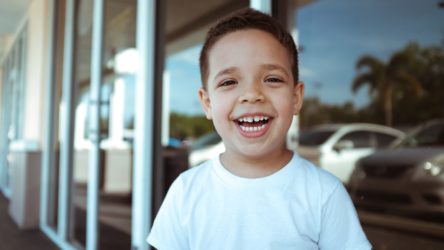 Gratitude is so simple, yet most people overlook its amazing benefits. Dr. David Hamilton, author of Why Kindness is Good for You, writes, “Gratitude is a mark of being kind to life by being aware of all that is around us, and when we are grateful, we acknowledge the people and situations in our life and express thanks for them.” We teach our children to say “thank you,” but it’s also important to model and teach them to see gratitude as a key philosophy of life. Seeing and feeling gratitude every day is one key to being resilient and successful.
Gratitude is so simple, yet most people overlook its amazing benefits. Dr. David Hamilton, author of Why Kindness is Good for You, writes, “Gratitude is a mark of being kind to life by being aware of all that is around us, and when we are grateful, we acknowledge the people and situations in our life and express thanks for them.” We teach our children to say “thank you,” but it’s also important to model and teach them to see gratitude as a key philosophy of life. Seeing and feeling gratitude every day is one key to being resilient and successful.
There is quite a bit of research on gratitude and the positive effects. These positive effects make sense, because when you think about what you feel grateful for, you can’t help but feel relaxed, fulfilled, and blessed.
The Benefits of Gratitude
- Greater sense of well-being
- Improved physical health
- Improved self-esteem, resilience, and empathy
- Decreased aggression
- Increased optimism
- Improved sleep
Gratitude even improves relationships. Research shows that saying thank you to someone helps to create a more positive relationship. When a child feels gratitude from his or her parents for being helpful or for just being a good kid, the child feels safer and more empowered to say something when they are upset and need to talk.
It is fairly easy to teach kids to practice a life philosophy of gratitude. Using the 30-day Imagine, Gratitude, and Kindness Challenge (Step 7 in My Imagine Journal) is a good place to start. Kids can have fun creating a family gratitude board or a gratitude box where everyone can write, keep, and even share what they feel grateful for. In our family, we play The Gratitude Game in the car or at mealtime. Particularly if someone has had a bad day, this can help them boost their spirits and feel better.
The Gratitude Game:
Each person takes a turn saying what they are grateful for, beginning with, “I am grateful for…”. You can also use, “I love…” saying what you love about each person or life in general.
Everyone takes at least three turns. If someone is unhappy about something, it may help to first clear the air by letting them talk about what’s upsetting them, while others listen with compassion. After they’ve had their say, feel more relaxed, and are ready to change perspective, switch it to gratitude, and watch moods brighten.
If someone wants to remain cranky, it might feel like pulling teeth to get them to join the game, but be patient and gently invite them to join when they feel ready. They may be content to listen—and benefit from it—especially if they know it’s not being done to manipulate their mood. Even if they continue to resist, simply let them be, and honor their desire to come around in their own time, on their own terms.
If a child, teen, or adult is struggling to express their emotions and move forward into gratitude, they might need a tool to talk about how they’re feeling. The Imagine Project journaling tool will give them an opportunity to say what has happened and even express how it’s made them feel. It’s a simple, powerful, and free process you can download from anywhere in the world. Please click here to download the journal and learn more about The Imagine Project.
I’m grateful for you,
Dianne
Dianne is the founder and CEO of The Imagine Project, Inc., a nonprofit organization that helps children K-12 (and adults) process and heal from difficult life circumstances through expressive writing. Dianne has her Masters in Psychiatric/Mental Health Nursing, has written multiple books, is an international speaker, lives outside of Denver, CO, and has 3 grown children. Learn more about The Imagine Project at www.theimagineproject.org.


 With the holidays comes family, fun, and gifts! There’s no better time of year to each a child (and adults) the importance of gratitude beyond the “Thank you” that comes after receiving a gift. Daily gratitude is such a simple idea/process, yet most people overlook it’s amazing benefits. Dr. David Hamilton, author of Why Kindness is Good for You, writes, “Gratitude is a mark of being kind to life by being aware of all that is around us, and when we are grateful, we acknowledge the people and situations in our life and express thanks for them.” We teach our children to say “thank you,” but it’s also important to model and teach them to see gratitude as a key philosophy of life. Seeing and feeling gratitude every day is one key to being resilient and successful.
With the holidays comes family, fun, and gifts! There’s no better time of year to each a child (and adults) the importance of gratitude beyond the “Thank you” that comes after receiving a gift. Daily gratitude is such a simple idea/process, yet most people overlook it’s amazing benefits. Dr. David Hamilton, author of Why Kindness is Good for You, writes, “Gratitude is a mark of being kind to life by being aware of all that is around us, and when we are grateful, we acknowledge the people and situations in our life and express thanks for them.” We teach our children to say “thank you,” but it’s also important to model and teach them to see gratitude as a key philosophy of life. Seeing and feeling gratitude every day is one key to being resilient and successful.